What had started as twelve people and a dream was now a billion-dollar company.
The story so far: At the end of the 1980s, Acorn Computers was at a crossroads. A small team, led by Sophie Wilson and Steve Furber, had invented a powerful new computer chip, the Acorn RISC Machine (ARM). Acorn released a new computer line, the Archimedes, that used these ARM chips. But the world wasn’t beating a path to the company's door. (Read part one here.)
From the beginning, it was hard to get anyone to care about this amazing technology. A few months after the first ARM chips had shipped, Acorn Computers' Steve Furber called a tech reporter and tried to get him to cover the story. The reporter replied, “I don’t believe you. If you’d been doing this, I’d have known.” Then he hung up.
As Acorn struggled, Furber tried to imagine how the ARM chip could be spun off into a separate company. But he couldn’t figure out how to make the business model work. “You’d have to sell millions before royalties start paying the bills,” he said in an interview. “We couldn’t imagine selling millions of these things.”
The future looked bleak—until a representative from another computer company walked through the door. A little company called Apple.
A new company
How had Apple heard about ARM in the first place? Two engineers in Apple’s Advanced Technology Group, Paul Gavarini and Tom Pittard, had built a prototype computer called Möbius. It used an ARM2 chip and ran both Apple ][ and Macintosh software, emulating the 6502 and 68000 CPUs faster than the native versions. Upper management at Apple was confused by this machine and quickly killed it, but Gavarini and Pittard kept beating the drum of ARM at internal presentations, showing impressive benchmarks when running LISP.
LISP was a heavyweight language, and Apple was using it internally to test new graphical interfaces. But it was considered too bulky for embedded applications. When Apple veteran Larry Tesler saw these benchmarks, a lightbulb turned on in his head.
Tesler had just taken over the Apple Newton project, and he needed to replace its slow and buggy CPU, the AT&T Hobbit. The ARM chip looked like a winner. Not only was it a speed demon, but its incredibly low power draw made it ideal for the handheld Newton device.

Tesler arranged a meeting with the ARM team, and he liked what he saw in their road map. But there was a problem. Apple was a computer company, and Acorn was a direct competitor.
This set the stage for a fateful decision. The ARM employees wanted to be free from Acorn’s declining fortunes. Acorn’s majority owner, Olivetti, was more interested in making IBM PC clones. VLSI Technology, the silicon foundry that manufactured the ARM chip, wanted more customers. And Apple wanted to license the chip. Spinning off ARM was in everyone’s interest.
In November 1990, a three-way deal was reached. Apple invested $3 million in cash for a 30 percent stake. VLSI invested half a million, plus its knowledge and tooling. Acorn transferred all its ARM intellectual property and twelve employees, valued at $3 million. At Apple’s request, the new company was renamed Advanced RISC Machines. ARM was now on its own.
A new leader

Saxby was born in 1947 in Chesterfield, England. As a child, he was fascinated by electrical wiring, and as a teenager he started his first business, repairing radios and televisions. He went to university in Liverpool, studying electronic engineering. After he graduated in 1968, his first job was helping design England’s first transistor-based television.
He joined Motorola in 1973 and was quickly promoted to sales engineer. This meant his job was to travel around to the firm’s customers and help them build their designs using Motorola products. When he moved to the CPU division, he thought his customers would all be mainstream computer companies. To his surprise, most people wanting Motorola CPUs had niche embedded applications in mind. At one point, he wrote a proposal for Motorola to spin off its CPU design team and offer design services, but management didn’t like the idea.
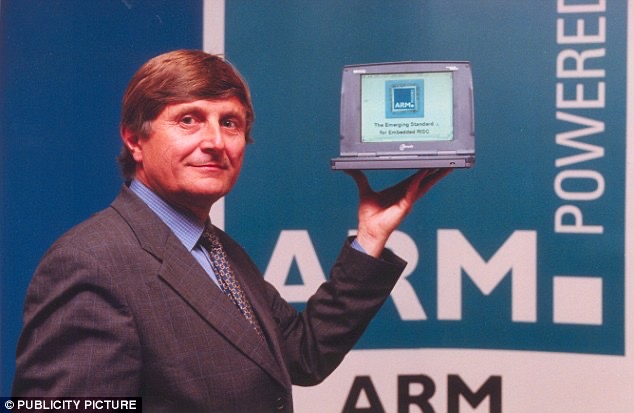
After Motorola, Saxby joined a startup called ES2 that was trying to develop a new silicon chip manufacturing technology. ES2 had built some test chips for ARM, so Saxby already knew about the company. But when he was asked to join ARM as its first CEO, he doubted he was the best man for the job.
To make sure, he set up a lunch meeting at a pub with the ARM staff. At the time, the company lacked leadership. Steve Furber had left to pursue other opportunities, and Sophie Wilson had made the “difficult decision” to stay behind at Acorn, although she was still available for consulting. The 12 remaining ARM employees were late for lunch, and Saxby nearly left. But when they got there, the meeting was a resounding success. All 12 engineers agreed unanimously that Robin Saxby was the right choice.
Even then, he needed a little push. He asked his 11-year-old daughter if he should take the risk of this new job. She said, “Dad, I’ve got a dice, and if you throw it and it says six, you’ll be a millionaire.” He threw it. It was a six. He became ARM’s first CEO in early 1991.

Trying times
The first thing the company needed was a business model. Saxby dusted off his old Motorola proposal and modified it for ARM’s needs. The company would license its technology for an upfront fee, in addition to a percentage royalty for each chip sold. The combination would theoretically be enough to keep the lights on. Saxby’s vision was ambitious from the start: He wanted ARM to be “the global RISC standard.”
Stating a goal is one thing, but achieving it is something else. The rest of the computing world had also jumped on the RISC bandwagon. IBM released the 6150 RT in 1986, followed by MIPS and HP’s PA-RISC and SUN with SPARC. Motorola shipped its 88000 in 1988, Intel released the i860 and i960 in 1989, and DEC was working on its Alpha chip. Competing with just one of these giants would have been hard. Defeating all of them seemed impossible.
But these companies were mostly using RISC to make high-end desktop workstations. Saxby remembered from his time at Motorola that embedded applications were an overlooked market. Maybe the global RISC standard was out of reach for now, but the global embedded RISC standard was achievable. And ARM chips had fewer transistors and drew less electrical power than the competition. That made them cheaper to manufacture and suitable for a wider range of applications.
Some of the first licenses were for fax modems and other small applications. Early on, money was tight. Acorn had originally promised the founding engineers they would get salary increases the following year, but in 1991, ARM was running out of cash. Saxby said that if the company got a major new contract, he would make good on this promise. He signed a deal with the British defense contractor Plessey, and he gave the engineers backdated raises.
The company’s first new product was the ARM6 core, a successor to the ARM3. It was built on a 0.8-micrometer process and ran at 20 MHz. Keeping with the Reduced Instruction Set Complexity philosophy, it had only two new instructions. The core itself had only 35,000 transistors, not much more than the original ARM’s 27,000. (In contrast, Intel’s 386 had 275,000 transistors!) For the Newton, ARM packaged this core together with a memory management unit and 4 KB of Level 1 cache. This was the ARM610.
At the same time, the company introduced the ARM250. It had the older ARM3 core but also included all the support chips that had been in the Archimedes computers: the memory controller, the I/O chip, and the video chip. It was a true “system on a chip,” or SoC. At the time, it didn’t have much of a market other than making the Archimedes a bit cheaper to manufacture. But it was a hint of things to come.
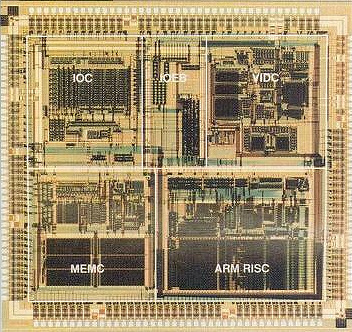
In 1993, Apple finally released the long-delayed Newton. In its first year, it sold 60,000 units. For a big company like Apple, that was considered a massive flop. But for ARM, with a royalty of $20 per chip, it was a windfall. Saxby invested the cash back into ARM, doubling the company size from 30 to 60 employees. It was a gamble. For it to work, ARM would need some major licensing wins.
Convincing the big guys
Being a small company sometimes made dealing with larger firms difficult. In a meeting with his former employer Motorola, Saxby recalled the executive closing by saying, “And of course, we won’t be able to pay you any license fees or royalties.” The company expected ARM to be happy to be paid in “exposure” since Motorola could have done the job itself. Saxby asked the executive how many engineers he had working on the project. The answer was about 200. “Do you realize,” Saxby asked, “that the license fee you’d pay to us is a quarter of what you’re paying for your engineers?” He still refused to give ARM money, and Saxby walked away from the deal.
Texas Instruments was another company that thought it could do better than ARM with its own internal resources. When the head of TI’s CPU division asked his boss for an ARM license, he shot back: “You’re telling me we can’t even compete with other companies in the design of a microprocessor core to embed in a baseband chip?” Later, in a meeting to discuss a potential partnership, the TI folks arrived without having signed a non-disclosure agreement. Saxby insisted that they leave immediately and come back when they had signed. ARM may have been small, but Saxby wasn’t going to let the company get pushed around.
TI dithered but eventually decided to introduce ARM to one of its largest customers: Nokia. It was a test. If ARM could convince Nokia to use its designs, they would be good enough for TI to build them.
In 1993, Nokia was already a rising star in mobile phones, having sold 3 million handsets in the previous year. It had big plans for its new models, but the company was happy enough with 16-bit Hitachi H8 CPUs, which were traditional CISC chips. A 32-bit RISC chip offered great leaps in speed and efficiency, but at the cost of a higher amount of instructions for equivalent code—and each instruction took twice the memory. On the desktop, this extra memory requirement was no big deal, but mobile phones had tiny amounts of RAM and storage.
On the flight home from a meeting with Nokia, the ARM engineers decided that if 16-bit was what Nokia wanted, 16-bit was what Nokia was going to get. They created a brand new set of simplified 16-bit instructions and designed circuitry that would map them to the existing 32-bit instruction set. That way, you could have smaller program code that took up less memory, but it would run at nearly twice the speed of a fully 16-bit chip. As a joke, the engineers called these extensions “Thumb” since a thumb is something you have on the end of an arm. The name stuck.
When Nokia engineers saw the plans for the Thumb architecture, as well as the more advanced ARM7 core that would come with it, they got very excited. TI realized that the small British company had passed the test, and it finally got an ARM license in 1994. Now TI could make advanced chips for a new generation of Nokia phones.
The first of these phones, the Nokia 8110, was the first GSM handset with an ARM core. It would become famous a few years later when it appeared in the movie The Matrix.
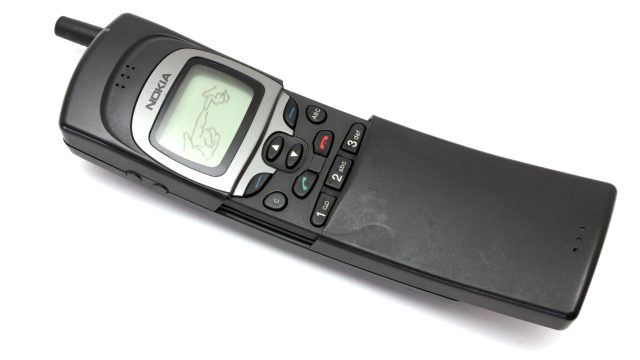
After the TI deal, ARM never looked back. The company now had real credibility in the electronics industry. It signed deals with Sharp, Samsung, and NEC. By 1995, the company was up to ten licensees.
ARM7 was a hit. The CPU was built on a 0.35 micrometer process and ran at speeds of up to 66 Mhz. The Thumb extensions were useful for mobile applications or anywhere that code density was important, but the chip could also run 32-bit code at full speed. Four more companies bought ARM licenses in 1996: Oki, Alcatel, Yamaha, and Rohm. Even Motorola eventually came around, signing a deal the following year.
Why did so many companies, including big electronic firms that already made their own chips, want to sign up with ARM? Part of it was the advantage in cost—ARM licenses weren’t prohibitively expensive, and they were certainly cheaper than paying hundreds of engineers for years to design new chips from scratch. Another part was the technological legacy that Sophie Wilson and Steve Furber had created. The ARM chips were fast and easy to manufacture, and they sipped power.
But there was another ace up ARM’s sleeve: the fact that it wasn’t just another chip manufacturing company. When ARM worked with other firms, it became a partner, helping design a solution that could be customized to the other company’s specific needs. The invention of the Thumb extensions for Nokia was only one such example. ARM also worked with Digital Equipment Corporation to create StrongARM, a much faster version of the chip that ran at speeds up to 233 MHz. These powerful chips ended up in the Apple MessagePad 2000 (an improved Newton), the Eidos Optima video editing workstation, and Acorn Computers’ newest RISC PCs (the new name for the Archimedes line).
For Robin Saxby, the idea of working with rival chip companies was always part of the strategy. “Turn your enemies into friends,” he would say. “Why should they fight you if they can make more money for themselves by collaborating with you?”
This feeling pervaded the company. In an interview with Ars, an ARM spokesperson explained it: “The ARM business model is a success-based business model based on the idea that ARM succeeds when its partners do.” After a slow start, the company was now proving that this wasn’t just a lofty ideal. It was working.
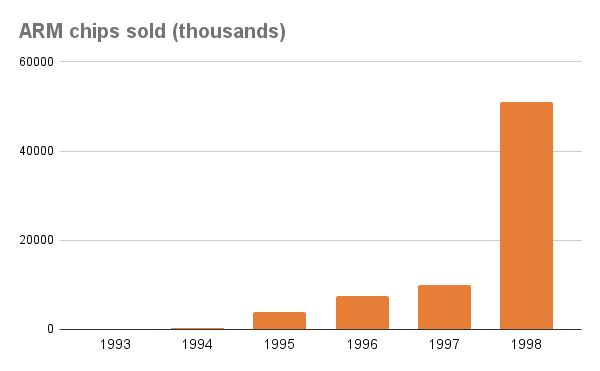
But ARM still had to be strategic. When LSI Semiconductor asked the company for a license, Saxby turned it down, even though the CEO offered him a lot of money. He did so because LSI would be competing directly with ARM’s manufacturing partner, VLSI. Instead, he asked the CEO of LSI to first bring them some new business and then he would reconsider. He came back with an offer from the hard drive company Western Digital. Every deal was expected to grow the market and help make ARM the standard.
Going public
By 1998, ARM had outgrown its original barn. The company had 274 employees, it had earned $44 million in the previous year, and it had made over $8 million in profit while shipping nearly 10 million ARM processors. ARM wasn’t quite yet the global RISC standard—MIPS had taken the crown there, thanks largely to the Sony PlayStation—but it was in third place and had overtaken Intel’s i960 and Motorola’s PowerPC. It was also the fastest growing of all the RISC chip suppliers.
All this positive growth made it a good time to take the company public. On April 17th, 1998, the company successfully raised an initial public offering (IPO) on both the London Stock Exchange and the NASDAQ. The initial price of the stock was 5.75 pounds, or just under $10. Later that year, when ARM reported selling 51 million processors, the shares skyrocketed. ARM, which had started with twelve people and a dream, was now a billion-dollar company.
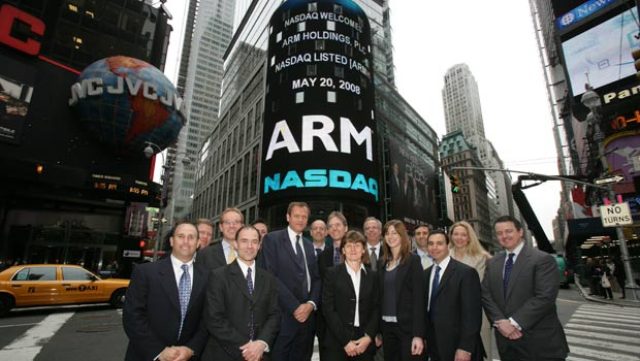
Two of ARM’s founding investors were headed in the opposite direction. Apple had lost over a billion dollars in 1997, and its operating cash was getting dangerously low. Starting the day after the ARM IPO, Apple unloaded most of its shares, going from a 42.3 percent stake to under 6 percent. This cashout helped Steve Jobs stabilize the company at a crucial time.
Acorn was also struggling. The company abandoned the development of its RISC PCs after sales continued to drop, and it canceled the final “Phoebe” model, leaving behind only its distinctive yellow case. At one point, the capital value of the company was worth less than its 24 percent holding of ARM shares. Acorn sold its stock and used the money to refinance and restructure the company. In 1999, the company renamed itself “Element 14” and changed its focus to developing telecommunications products.
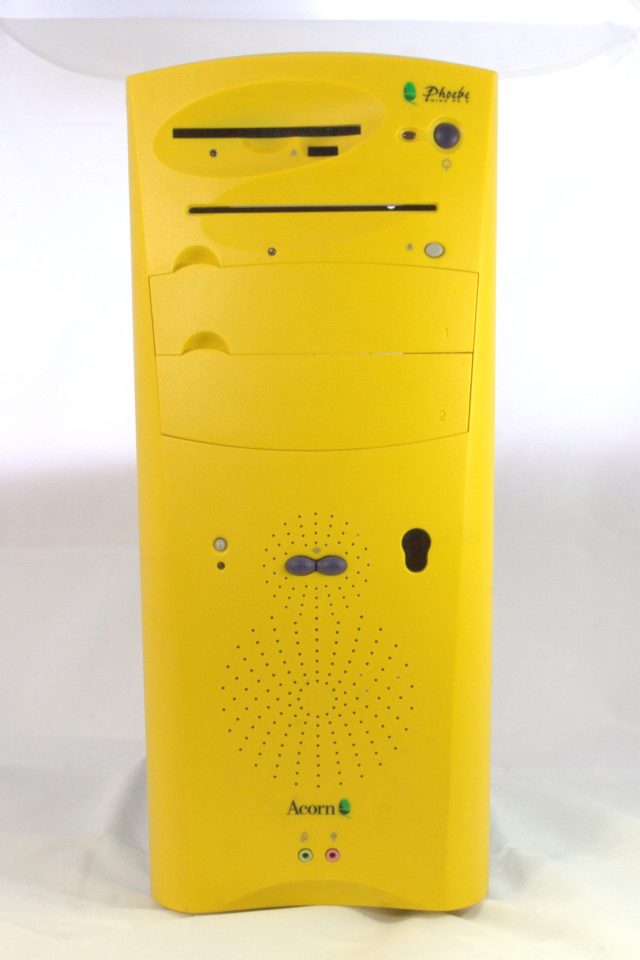
VLSI Technology continued to grow, buoyed by the success of ARM. In June 1999, it was acquired by Philips Electronics for $1 billion.
A changing world
ARM had started as a crazy dream. Back in 1985, Sophie Wilson and Steve Furber had looked at a number of available CPUs and found them all wanting. Incredibly, they led a 10-person team in developing an advanced, 32-bit RISC CPU from scratch, taking only eighteen months to go from idea to working silicon.
Initially, the idea was to take these amazing CPUs and build great personal computers around them, thus taking over the world. But the world had changed, and there was no more room for new, incompatible computer platforms. Instead, thanks to Apple, VLSI, and the vision of Robin Saxby, the ARM chip found itself free to go wherever it was needed the most. And for the next decade, it was needed most in all kinds of small devices, from fax modems to hard drives to mobile phones.
But as the new millennium approached, these small devices were becoming more and more powerful. Although the Newton had flopped, the general personal digital assistant market was booming, and mobile phones were starting to get PDA-like features themselves. The stage was set for ARM’s greatest opportunity—and its greatest challenge.
- Karlston and Kaos
-

 2
2


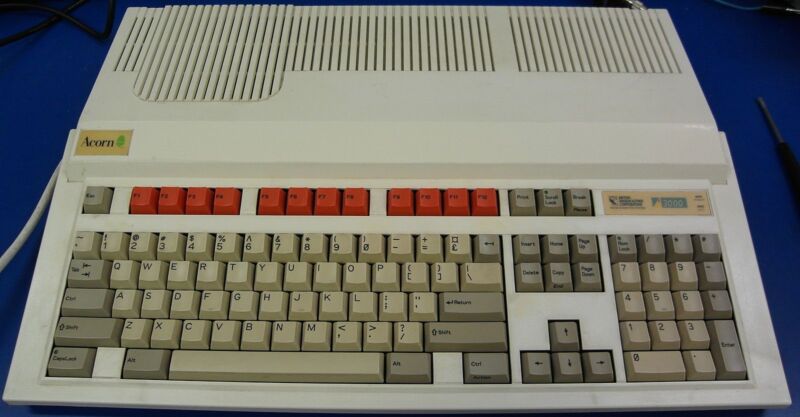

Recommended Comments
There are no comments to display.
Join the conversation
You can post now and register later. If you have an account, sign in now to post with your account.
Note: Your post will require moderator approval before it will be visible.